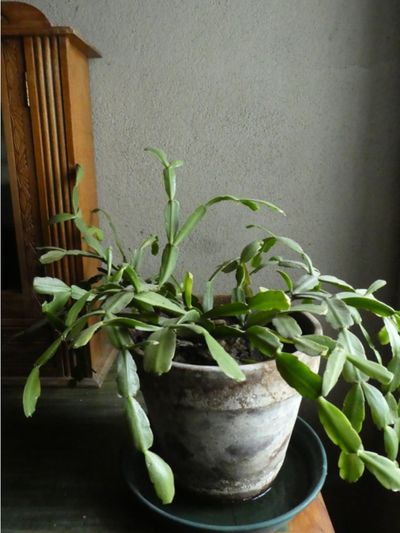Christmas cacti hail from the coastal mountains of southeastern Brazil. They belong to the genus Schlumbergera, which includes all the holiday cacti. Their native region receives plentiful rain much of the year, so Christmas cactus is not the classic drought tolerant desert variety. They need a good drenching, but then the soil should be allowed to almost dry out. During flowering they need to be kept moderately moist but take care not to use too much water on Christmas cactus.
Overwatering Symptoms on Christmas Cactus
Any cactus that has been allowed to sit in a saucer full of water is likely to have its health reduced. An overwatered Christmas cactus plant will show obvious signs of distress. If the saucer has not dried in one day, you should always dump the excess water to prevent moisture gnats and keep the roots from rotting. In case you didn’t remember to do this, one of the first overwatering symptoms on Christmas cactus will be limp leaves, which will start to drop off. Then the stems and branches will soften and get mushy. Severe cases will manifest with a foul odor and the stem will rot completely off. Prevention is simple. Use a soil meter to keep from putting too much water on Christmas cactus.
Tips on Saving an Overwatered Christmas Cactus
Overwatering is one of the classic Christmas cactus problems, so don’t feel too bad if your plant starts exhibiting symptoms. Act fast and dump out any standing water, then carefully remove the plant from its container. Remove any stems that have started to get soft. Rinse the roots to remove any fungus that might have started to grow and then let them dry out for a day on the counter. Repot the plant the next morning and let it stay dry for a day or so before beginning a regular water regimen. If you caught it quickly enough, the plant should recover. Use your soil meter to prevent any future Christmas cactus problems, as the weakened plant might not withstand another bout of illness.
Just in Case!
Christmas cactus is one of the easiest plants from which to get cuttings. Choose healthy stems and root them in a glass of water or stick them into perlite or vermiculite to get roots started. Transplant them in a mixture of one part sand, one part potting mix and one part orchid bark for superior drainage. Use an unglazed pot to encourage evaporation of excess moisture. This will help ensure that you won’t have to worry again about saving an overwatered Christmas cactus. Provide full sun until a few weeks before the blooming period. Then allow it to have a dark period of at least 14 hours per day to promote flowering. Also, suspend watering for this period. Soon you will have a holiday cactus to brighten your festivities and share with friends and family.
